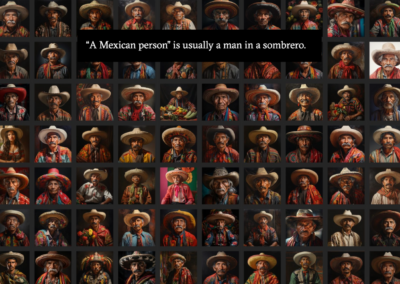I recently shared a post on LinkedIn on “Mindset Shifts for Organization Transformation” that attracted 40k views—clearly the topic of how to transform an organization was timely.
After reading The Unfinished Business of Organizational Transformation by Aaron Sachs and Anupam Kundu, it was clear to me that mindset shifts are just as important as ever. My experience working with clients has influenced my belief that the best leaders will know how to find the right balance to achieve organizational transformation.
We know systematically, organizations will always have a hierarchy on paper, but we’re starting to see organizations shift from their hierarchies to networks. Organizations are embracing a more fluid and humanized approach to collaborating. It’s more common for company workforces to be a combination of full time, part time, in-person, remote, and contract employees. I’ve seen success in many organizations operating in this way, including We Are Rosie’s partners, and I believe this model will continue to be the way to go. This humanized network creates a culture of collaboration, increases employee communication, and builds a supportive network for both individual and organizational success.
A Financial Times article, “A radical prescription to make work fit for the future,“ supports the shift from hierarchies to networks.
“Glimmers of this approach were seen early in the COVID-19 pandemic. Across public and private sectors, leaders from line managers to chief executives went to exceptional lengths to look after their people, wherever they were. To their surprise, caring about people made productivity go up, not down. At the same time, much work shifted from the center to smaller, often ad hoc, teams. Devolving decision-making to the frontline and increasing localization forced leaders to trust their people to know what to do. They haven’t been disappointed. Where sharing responsibility might have felt a risk, now it’s an obvious asset.”
As more organizations shift to a networked culture, their leaders will need to shift their mindsets in order to support it and see success.
Mindset shift #1: from hierarchies to networks
In a world where business conditions can change overnight, organizations can use a networked organization to their advantage. These humanized networks create a people-centric culture where collaboration is encouraged. This increases employee communication, employee engagement, and builds a supportive network for both individual and organizational success.
What can leaders do?
Leaders should enable these networks to exist and support the human elements and dynamics associated with these high-performing teams. As businesses become more networked, leaders need to foster teams with people who can think beyond their own functions or locations. These networks improve communication and collaboration across the functional and geographic silos and improve access to resources, skills, and technologies across the organization that might otherwise be not visible in the vertical silos.
Mindset shift #2: from profit to purpose
I believe that profit and purpose go hand in hand. We know organizations need profit to survive, but we also know that employees are an organization’s most important asset. It is important for individuals to identify, clarify, and align personal purpose with organizational purpose. It will have a multiplier effect on their productivity and personal engagement. Employees who have a sense of purpose at work and are all working together towards the same goals in a purpose-driven organization are happier, more productive, and have more satisfaction at work. The more engaged employees you have in your organization, the more likely the organization will reach its goals (profit).
What can leaders do?
Leaders need to know their sense of meaning, and that starts with defining a clear purpose for themselves. After, they can help their employees clarify their “why”. Supporting employees in learning about the power of their purpose, and how it connects with the organization’s purpose, will ultimately help drive overall growth.
Mindset shift #3: from controlling to empowering
When employees feel empowered to make decisions, provide feedback, and take action within an organization, they are more likely to create incremental value while increasing their engagement. I have heard leaders admit they do not coach their employees because they do not have time and that it feels like another item on their to do list, but I believe it is the most important item on their to do list. When leaders invest the time needed to support and empower their team members through development, employees begin to feel confident and organizations will thrive with innovation as a result. Neuroscience tells us that if employees have their own insights, with the help from their manager, they will change their behavior in a more sustainable way, than if their manager tells them the answer.
What can leaders do?
Leaders should start by listening to really understand their employees’ goals, motivators, and ideas. This combined with coaching and mentoring, assigning stretch assignments to learn new skills, and nurturing a work culture that attracts and keeps top talent, will empower your workforce.
Mindset shift #4: from planning to experimentation
Employees should think big, try new things, and not be afraid to “fail”. Innovation is key in growing and moving the organization forward and to be innovative the company, as a whole, needs to experiment. With the recent COVID-19 pandemic, we have seen organizations and individuals experiment and demonstrate agility more than the previous years. We have seen endless new strategies such as shifting to remote, introducing new communication technologies, and many more innovations that will continue to shape how work gets done.
What can leaders do?
Leaders need to have a growth mindset and coach their employees to adopt one, if they haven’t already. A growth mindset will continually allow all employees, leaders and individual contributors, to be agile when there is change, have a strong value proposition, and build a culture of innovation and learning.
Mindset shift #5: from privacy to transparency
We are in a time where answers are not readily available and we are unsure of the future. Leaders today must be transparent with their employees and open up the lines of communication to move the organization forward. This can be uncomfortable at times, but a responsive organization is one that can adapt and pivot based on open lines of communication. Transparency between leaders and employees builds trust. Trust is a hard thing to obtain today so when it is present, the amount of productivity and engagement in an organization multiplies.
What can leaders do?
Leaders should be as transparent as possible. Leaders should explain the why and layout the current reality then involve their employees in figuring out how to best move forward together. Be sure to be open and transparent on key decisions and changes in business processes, procedures, and teams.
Networked organizations offer the benefit of having intelligent people who bring a unique perspective and skillset, combined with a network of creativity and collaboration. This creates a work environment that people want to be a part of and makes companies fit for the future, whatever it may bring.
These suggestions are all high-level examples of actions leaders can take to start mindset shifts. While each of these mindset shifts can be explored in much more detail, these mindset shifts are the core of how organizations need to transform and adapt to the ‘ultra-fast’ changes currently taking place.
__________________________________________________________________________________________________
Scott’s Socials: LinkedIn
Editor’s Socials – Dominque Dajer: LinkedIn, Twitter, Instagram



